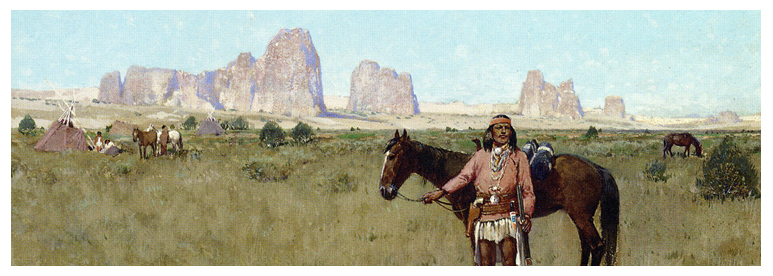
Farny’s family left France in 1853 to emigrate to the United States. The family moved to Warren in Pennsylvania, near a Seneca reservation. Farny was profoundly affected by the Indian civilization he encountered at an early age. Around 1859, the Farny family moved to Cincinnati, Ohio. Attracted by painting and drawing, the young man became an illustrator for magazines and books for children. When he was 18 years old, Harper’s Weekly published a double page view of Cincinnati he made. Between 1867 and 1870 he took private lessons from Albert Bierstadt in Düsseldorf. By the time Farny had arrived at Düsseldorf, and began attending Düsseldorf academy in the late 1860s the Düsseldorf school of painting had already begun to lose its once high acclaim amongst most of the American populace. One part of America where this was not the case was in Cincinnati, Ohio where the realist objectives taught there were still being held in high esteem. Despite this, upon his return to Cincinnati in 1870 Farny who had been studying abroad came home to a minimally responsive demand by Cincinnatians for his paintings, and instead used his new found skills in the service of poster painting and other odd jobs. In 1873 this all changed when he was commissioned by the chamber of commerce to depict in drawing the different stages of pork packing in Cincinnati.
Farny died in Cincinnati in 1916.
Farny who was an erudite scholar, and student of both Munich and Düsseldorf’s school’s of fine arts, nonetheless, can be seen, from his works of art to have assimilated the Düsseldorf techniques of a drab styled realism into his paintings. In his depictions of the post civil war era and oppression of native Americans at the time, Farny masterfully painted confounding situations, such as a perplexed Indian examining a telephone line. This painting entitled (In song of the Talking wire, a major work of 1904) can be interpreted as ‘in the struggle against the white man’s technology he must succumb’ “John Clubbe”. This painting along with one entitled “Morning of a new Day” which shows native Americans on a snowy hill watching a far away train have gained Farny a reputation of practicing the ‘vanishing race’ style of painting.
